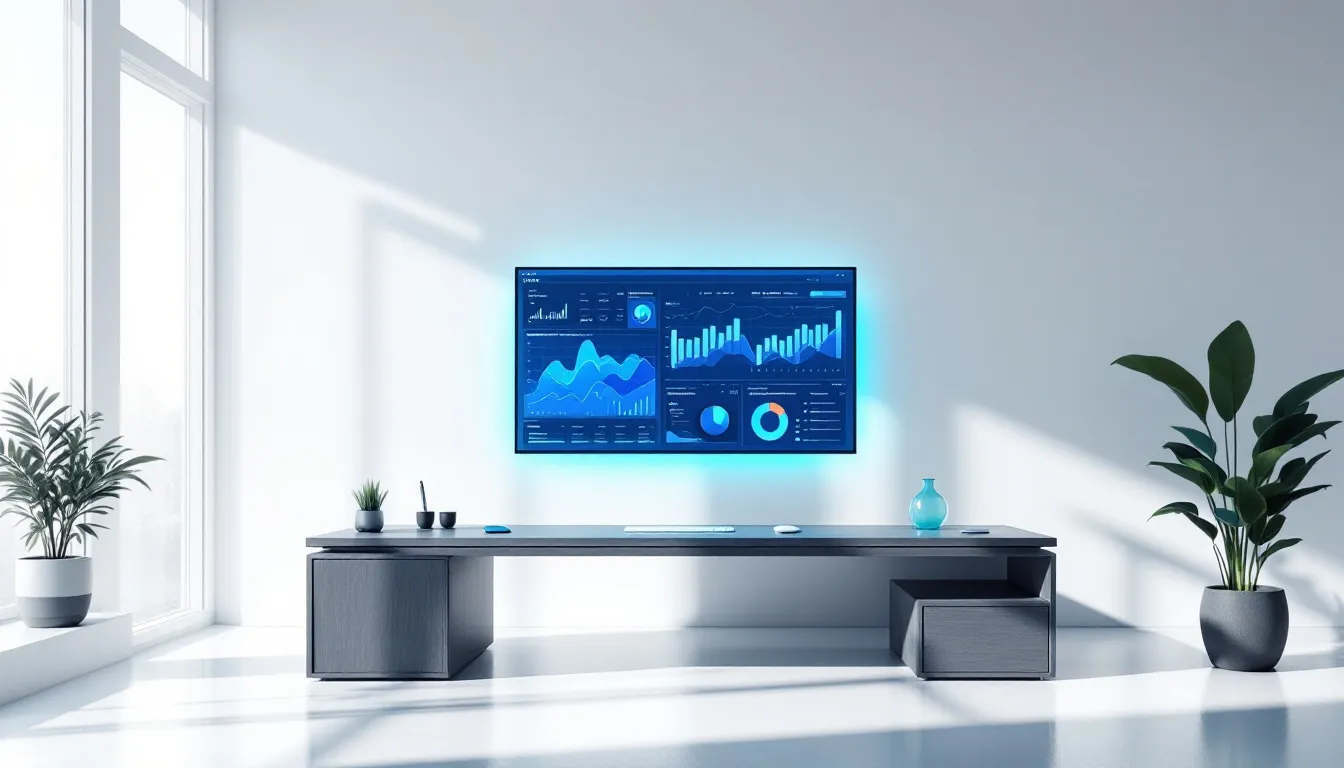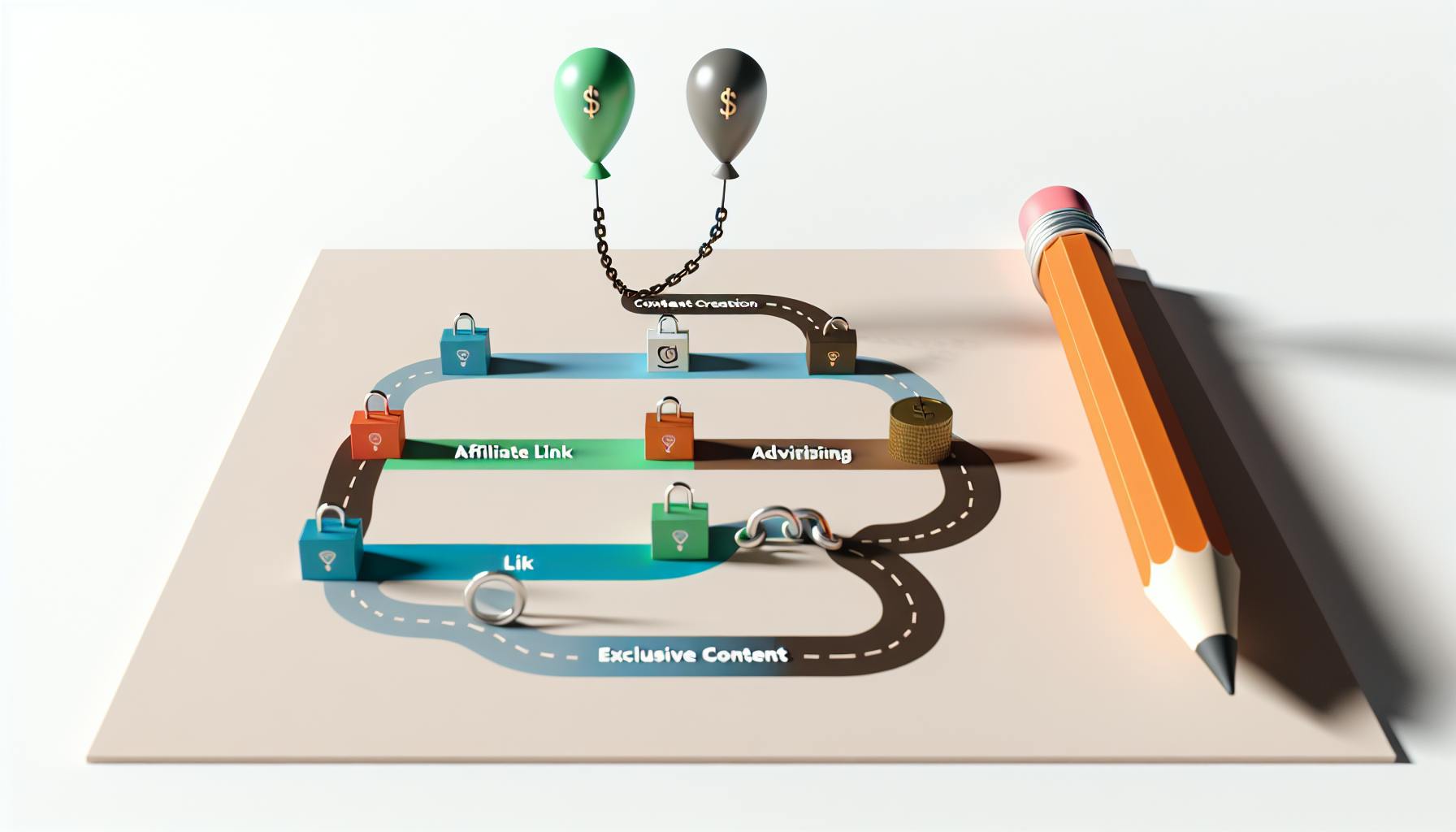Most social media managers would agree: juggling multiple platforms and campaigns can quickly become chaotic.
Luckily, advanced social media reporting services offer powerful tools to streamline workflows. By centralizing data and automating reporting, these services provide actionable insights to enhance performance.
In this post, we'll explore the capabilities of leading social media reporting tools. You'll discover how they can help you visualize critical metrics, identify optimization opportunities, and strategically adjust campaigns based on data-driven decisions.
Introduction to Social Media Reporting Services
Social media reporting services provide a valuable solution for social media managers and digital marketers seeking to streamline workflows and optimize performance. By centralizing data into intuitive dashboards and reports, these platforms make it easy to visualize key metrics & KPIs, set goals, and benchmark success.
Understanding Social Media Reporting Services
In essence, social media reporting services aggregate real-time data from multiple social media platforms into a unified interface. This allows users to break down silos and analyze performance across different channels - from Facebook and Instagram to Twitter and YouTube.
Key features include:
- Customizable dashboards to visualize important metrics & KPIs - Automated reports delivering insights on content, campaigns, competitors, and more
- Tools to set goals, benchmark performance, and forecast future growth - Easy integration with existing social media management tools - APIs to connect other software platforms and automate your reporting
The Advantages for Social Media Managers and Digital Marketers
For busy social media managers and marketers, social media reporting services provide vital advantages:
- **Save time** by automating manual reporting tasks
- Centralize your data from across all key social channels
- Optimize strategies by identifying top-performing content and campaigns
- Simplify reporting with shareable, visual dashboards tailored to stakeholders
- Benchmark performance against historical data, forecasts, and industry standards - **Surface insights** to guide your social media marketing strategy
In summary, social media reporting services empower users to streamline workflows, measure performance more effectively, and make data-driven decisions to boost social media success.
What is social media reporting?
Social media reporting provides actionable insights into a brand or business' performance on social media platforms. It involves tracking key metrics and data points over time to identify trends, optimize campaigns, and demonstrate ROI.
Some common elements of social media reports include:
- Performance metrics like impressions, reach, engagement rate, clicks, conversions
- Audience demographics and segmentation
- Content analysis detailing top-performing posts, formats, etc.
- Competitor benchmarking
- Campaign recaps outlining results
Robust social media reporting services automate data aggregation from multiple platforms into centralized dashboards. This allows brands to efficiently track metrics & KPIs and extract insights through custom reports and visualizations.
Key benefits of using social media reporting tools include:
- Saving time by automating manual reporting tasks
- Identifying content resonating with your audience - Optimizing budgets by tracking ROI - Informing your social media marketing strategy
In summary, comprehensive reporting is vital for brands aiming to maximize their social media presence and demonstrate tangible business impact.
How do I report social media results?
Reporting social media results can streamline workflows for social media managers and marketers by providing actionable insights into performance. Here is an 11-step process to create an effective social media report:
Determine the target audience
First, identify who needs this report - your manager, a client, your team? Tailor the report to their goals and required level of detail.
Set goals and objectives
Determine the purpose of the report. Are you tracking engagement, conversions, or something else? Set specific, measurable goals that align to business objectives.
Choose relevant metrics
Select key performance indicators (KPIs) that relate to the goals and provide meaningful insights. Common social media metrics include impressions, reach, engagement rate, clicks, conversions, and more.
Gather data
Use social media reporting services to automatically pull metrics from multiple platforms into a centralized dashboard. Services like Sprout Social, Hootsuite, Rival IQ, and more can track cross-channel data.
Analyze performance
Compare metrics to goals, previous periods, and industry benchmarks to identify trends and opportunities. Social media reporting services provide visualizations to easily spot patterns.
Create visualizations
Transform metrics into charts, graphs, tables to simplify complex data for stakeholders. Many services have customizable dashboard templates.
Compare periods
Put this period's performance into context by benchmarking against previous ranges. Set realistic targets for improvement quarter over quarter.
With the right social media reporting process, you can demonstrate ROI, showcase achievements, and optimize your strategy. Automated reporting through services like Sprout streamline data analysis so you can focus on strategic social media management.
What is Hootsuite used for?
Hootsuite is a popular social media management platform used by marketers, social media managers, and businesses to efficiently manage their social media presence across multiple networks.
With Hootsuite, you can:
- Design, schedule, and publish content to all your social networks from one centralized dashboard
- Create visually appealing posts quickly using Canva templates integrated within Hootsuite
- Utilize AI to generate automatic captions and hashtags optimized for each social platform
- Streamline content approval workflows between team members before publishing
- Analyze social media performance through custom reports and data visualizations
In summary, Hootsuite helps teams collaborate, plan, publish, engage, and monitor social media efforts more effectively. Its automation and integration capabilities allow you to manage multi-channel social media marketing campaigns easier.
What tool can help you visually track a person's social network?
Sendible is a leading social media management platform that provides robust monitoring, listening, and reporting capabilities to help users track engagement across networks.
With its intuitive dashboards and visual analytics, Sendible enables users to easily track the social connections and conversations surrounding a person or brand. Key features that facilitate visual social network tracking include:
- Relationship Mapping: Visualize the connections between social profiles and pages to understand an individual's broader social network.
- Mention Monitoring: Get alerts when a name or brand is mentioned online and see the conversation threads where it appeared.
- Influencer Identification: Discover top influencers driving conversations about a person or brand by volume and engagement.
- Audience Insights: Analyze follower demographics like location, gender, and interests to see who comprises an individual's social network.
- Engagement Tracking: Monitor how much engagement a person drives with their social content over time.
By centralizing multiple social networks into a single dashboard, Sendible makes it easy to visually map out and track a personal or brand-related social ecosystem. Users can leverage these insights to identify key connections to nurture as well as new opportunities to expand their social reach.
With robust analytics and reporting, Sendible is an invaluable tool for anyone looking to closely track their social media landscape.
sbb-itb-645e3f7
Centralize & Visualize Your Data
Social media reporting services provide a centralized dashboard to visualize data from multiple platforms. This unified view of metrics and KPIs enhances analysis and drives better decisions.
Integrating Social Media Platforms
- Connect profiles from Facebook, Instagram, Twitter, YouTube, LinkedIn, etc.
- Import historical and real-time data into reporting platform
- Eliminate manual aggregation of metrics across channels
Integrations eliminate data silos, providing a holistic view of multi-channel campaigns.
Metrics & KPIs Dashboard
Unified dashboards track cross-channel performance:
- Impressions and reach
- Engagements and conversions
- Audience demographics
- Content analytics
Visualizations like charts and graphs help spot trends and opportunities.
Benchmarking with Social Media Data Platforms
Leverage industry benchmarking to evaluate campaign performance:
- Compare metrics to industry averages
- Set goals based on real benchmark data
- Identify areas to optimize
Benchmarking informs strategy and goal-setting.
Custom Metric Builder for Tailored Insights
- Build customized metrics tied to business goals
- Get granular data on unique objectives
- Examples: ROI, content sentiment, etc.
The custom metric builder enables tracking distinct to your strategy.
In summary, social media reporting services centralize data into insightful dashboards to enhance analysis, benchmarking, goal-setting and optimization. Automated reporting eliminates manual processes while customizations provide tailored tracking.
Automate Your Reporting with Social Media Reporting Tools
Social media reporting tools provide robust analytics and reporting capabilities to help optimize your strategy. By automating repetitive reporting tasks, these services save time while ensuring you have consistent access to the latest metrics.
Automated Reporting for Efficiency
Automated reporting features allow you to set up report templates that run on a schedule. This eliminates the need to manually pull the same reports every week or month. Some key benefits include:
- Save time by removing repetitive reporting tasks from your workflow
- Consistent updates with scheduled delivery of reports right to your inbox
- Custom templates that pull the exact data points and metrics you need
- Shareable reports that provide updates to clients and team members
Leveraging automation means you spend less time pulling reports and more time analyzing the data to inform your social media strategy.
Data Visualizations and Dashboard Reporting
Data visualizations within social media reporting tools, such as charts, graphs, and dashboards, help monitor metrics and identify trends. Benefits include:
- At-a-glance monitoring with dashboard snapshots of key metrics and KPIs
- Track performance visually over any date range for deeper analysis
- Compare metrics across platforms, campaigns, and assets
- Identify trends and anomalies in performance to optimize efforts
Well-designed dashboard templates allow non-technical users to easily analyze campaign performance. Customizable widgets give flexibility in the data you display.
Goal Tracker and Performance Management
Goal trackers within social media reporting services facilitate performance management by connecting metrics to objectives you set. You can:
- Set S.M.A.R.T. goals for critical metrics like engagement, reach, conversions
- Track progress toward monthly, quarterly, or annual goals
- Surface insights into what content and strategies are working
- Identify underperforming areas to refine approach and reallocate resources
Aligning analytics to goals helps focus efforts on what matters most to your social strategy and business objectives.
Calculated Metrics for Advanced Analysis
Calculated metrics allow creating custom formulas by combining multiple data sets. This facilitates deeper analysis such as:
- Engagement rate per post/campaign calculated from reactions, comments, shares
- Conversion rate from clicks to sales
- ROI from social ad spend to revenue generated
- Benchmarks to compare performance against industry standards
Custom metrics derived from complex data sets provide actionable insights to refine your social media marketing strategy.
In summary, social media reporting services like Agorapulse and Sprout Social help automate repetitive reporting tasks while providing data visualizations for at-a-glance monitoring. Features like goal trackers facilitate performance management against objectives. Custom calculated metrics empower advanced analysis of multiple data sets to surface strategic insights. Leveraging these capabilities allows streamlining your workflows while making data-driven decisions to enhance your social media efforts.
Seamless Workflow Integration Features
Social media reporting services can help streamline workflows for social media managers and digital marketers by automating repetitive reporting and management tasks through seamless integrations.
Scheduled Reports and Automated Notifications
Scheduling recurring reports and configuring automated notifications ensures timely access to the latest data without having to manually generate reports. This allows social media managers to efficiently track key metrics and KPIs on a regular basis through automated dashboards and reports delivered to their inbox. Pre-defined report templates further simplify reporting.
Integrations with Digital Marketing and Management Tools
Many social media reporting services integrate with popular digital marketing and social media management platforms like Hootsuite, Sprout Social, HubSpot and more. Rather than having to manually export and consolidate data from multiple sources, these integrations automatically pull data from the tools you already use and connect it to your centralized reporting dashboard. This streamlines workflows by eliminating tedious manual reporting.
Real-time Data for Immediate Adjustments
With real-time data on social media performance made available through automated reporting, social media managers can respond and adjust strategies instantly rather than waiting for scheduled reports. This enables them to capitalize on viral posts, address negative sentiment, fine-tune campaigns based on latest metrics, and more.
Automation in Social Media Engagement Analysis
Sentiment analysis and engagement metrics provided through automated reporting dashboards allow you to track audience sentiment and engagement over time without manual evaluation. This makes it easy to gauge how audience sentiment evolves based on your content strategy and spot negative trends early. Automated benchmarking against industry standards further simplifies performance management.
Data-Driven Decision Making for Social Media Marketing
Social media reporting services provide actionable data that can inform strategic decisions in social media marketing.
Utilizing Reports to Identify Successful Campaigns
Social media managers can analyze performance reports to identify top-performing campaigns that drive the most engagement and conversions. By reviewing metrics like impressions, reach, clicks, shares, comments, and sales, managers can double down on initiatives that meet benchmarks and goals. For example, promoting content that resonates with your audience can further boost visibility.
Optimization Opportunities from Data Analysis
Examining social media data and reports over time reveals dips and opportunities to optimize campaigns. If engagement dropped on a recent post, managers can tweak messaging, visuals, timing, targeting, and more to reinvigorate performance. Reports also showcase channels and campaign types that need improvement relative to past results.
Forecasting and Planning with Social Media Data Tools
With historical metrics and forecasts from social media reporting tools, managers can model and plan upcoming initiatives with a higher likelihood of success. Viewing past performance by campaign type, channel, audience segment, etc. allows more strategic budgeting, resource allocation, and goal-setting. Forecast models also estimate volumes, enabling better preparation.
Strategic Adjustments Based on Social Media Analytics
As social media analytics reveal more about your audience and content performance, managers can make informed strategic adjustments. For example, detailed audience segmentation fuels more personalized content that boosts engagement. Viewing sentiment and preferences also facilitates messaging and positioning refinements. With a data-driven approach, managers can refine social media strategies to align with target audience needs.
Conclusion: Enhancing Performance Management with Social Media Reporting
Social media reporting services provide invaluable capabilities to streamline workflows and optimize efforts for social media managers and digital marketers. Key benefits include:
- Automation of manual reporting tasks like data collection, report generation, and scheduling. This saves significant time and effort.
- Centralized data from multiple social media platforms integrated into one dashboard. This enables an efficient overview of cross-channel performance.
- Performance analytics with metrics, KPIs, and visualizations to benchmark efforts and track progress towards goals. This facilitates data-driven decisions.
With workflow automation, a unified view of data, and actionable insights, social media reporting services enhance performance management capabilities. Teams can better allocate resources, identify improvement areas, and demonstrate ROI of social media efforts to stakeholders.
Ultimately, these services aim to help streamline processes so social media managers and marketers can focus on strategy and content creation rather than manual reporting. This optimizes productivity and drives better results.


